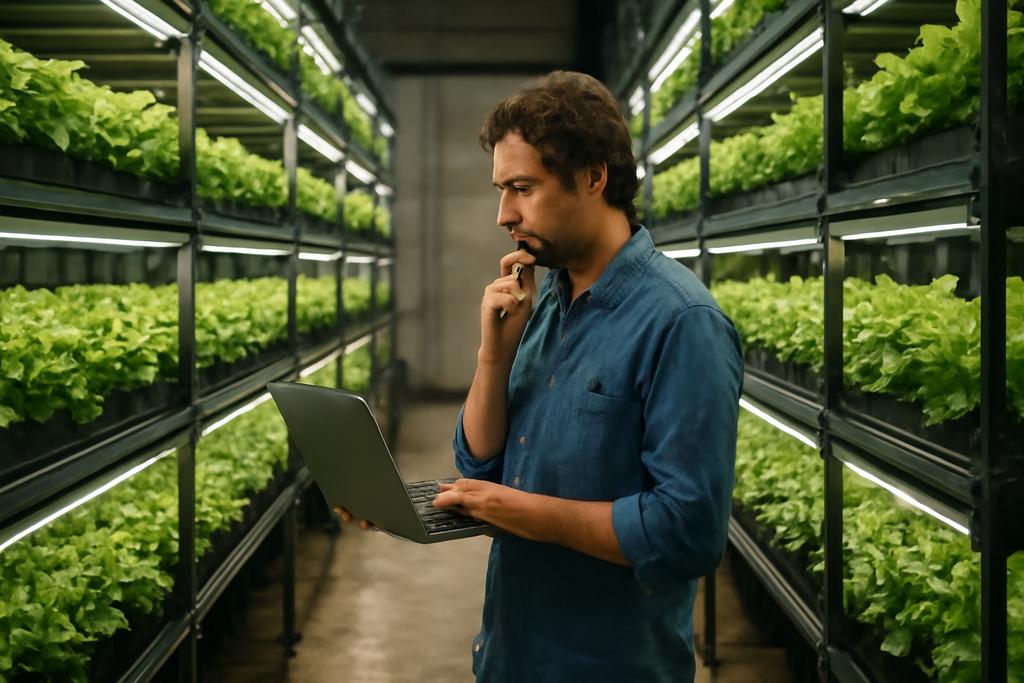The rise of vertical farming, where crops are grown in stacked layers indoors, promises a future of sustainable food production. But can these towering farms truly deliver on their environmental and economic promises? A recent study from the University of Pisa sheds light on the complex interplay of energy, climate, and costs in vertical farming.
The Energy Equation of Vertical Farming
Vertical farms, while efficient in terms of land use, are energy hogs. Researchers Francesco Ceccanti and colleagues modeled 162 scenarios, combining different temperature, light intensity (PPFD), and CO2 levels across diverse climates (Norway, China, Dubai). They found light intensity was the dominant factor in both crop growth and energy consumption. This is like turning up the volume on a stereo: more light means more growth, but it also means significantly more electricity for lighting and cooling.
The energy used for lighting and cooling, in fact, can account for more than 95% of the total energy required by vertical farming. This underscores how important optimizing light use is in vertical farming. The study found that even with insulation, changes in external climates had a minimal impact on crop productivity.
Insulation: A Necessary Evil?
Interestingly, insulation, a standard practice in construction to minimize energy loss, played only a modest role in energy efficiency. In cold climates, lack of insulation could actually decrease energy consumption, particularly with high light intensity and high temperatures, because the building’s heat loss helped offset cooling needs. But, this was only observed under specific conditions and in a cold climate.
In warmer climates, insulation was invariably beneficial. This isn’t surprising: think of keeping an ice cream cone from melting on a hot day – the insulating cone helps keep it cold longer. The same principle holds for vertical farms. While insulation may be slightly more expensive upfront, it generally leads to significantly lower operating costs in the long run.
The Economics of Lettuce
The researchers also conducted an economic assessment, calculating the levelized cost of lettuce (LCoL) – a measure of the total cost per kilogram of lettuce over the farm’s lifetime, considering capital expenditures, operating expenses, and the yield. Here, they discovered a surprising outcome: the optimal light intensity for the lowest LCoL was not the highest, but an intermediate level of 250 µmol m-2 s-1.
This highlights the need to find a balance. While higher light intensity boosts productivity, the additional energy costs can outweigh the benefits. This study emphasizes that economic optimization is key to successful vertical farming and might be more important than yield optimization.
Sustainability: A Long Road
The environmental implications are complex. The study found that vertical farms in countries with highly decarbonized energy grids, such as Norway, could reduce CO2 emissions compared to importing lettuce. However, in regions heavily reliant on fossil fuels, the energy used in vertical farming could actually increase carbon emissions.
This finding should not discourage research into vertical farming, but rather refocus it. It implies that for vertical farming to truly be sustainable, we need to first reduce our overall carbon footprint – particularly from our energy systems.
Beyond the Numbers
This study offers a nuanced perspective on vertical farming. It demonstrates that there’s no single magic setting to optimize these farms. The optimal configuration depends on numerous interconnected variables, from climate and energy costs to the specific crops grown.
The research, while comprehensive, also suggests areas for further investigation. For example, exploring the potential of integrating renewable energy sources into vertical farms, and more sophisticated, adaptive control systems, could significantly improve their environmental and economic performance.
The findings from Ceccanti and his colleagues at the University of Pisa provide a crucial blueprint for the future of vertical farming. It serves as a stark reminder that while the technology shows immense potential, achieving true sustainability demands careful design, local adaptation, and a commitment to decarbonizing our energy systems.










